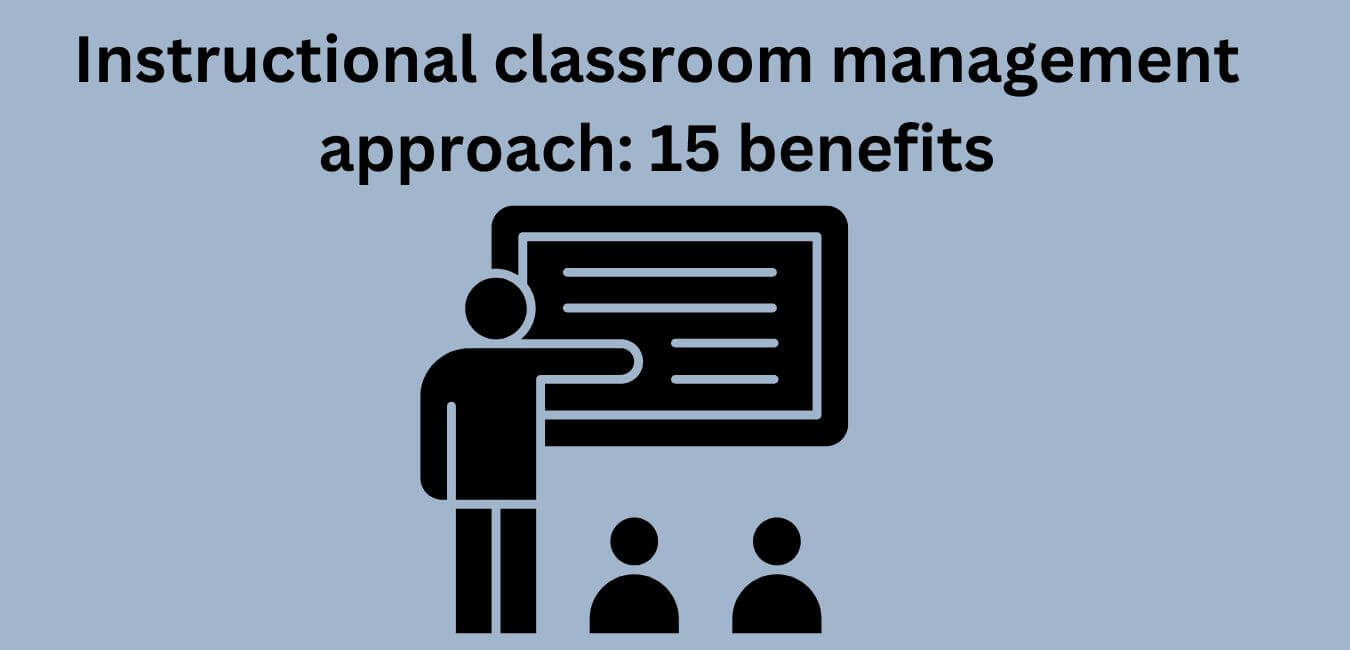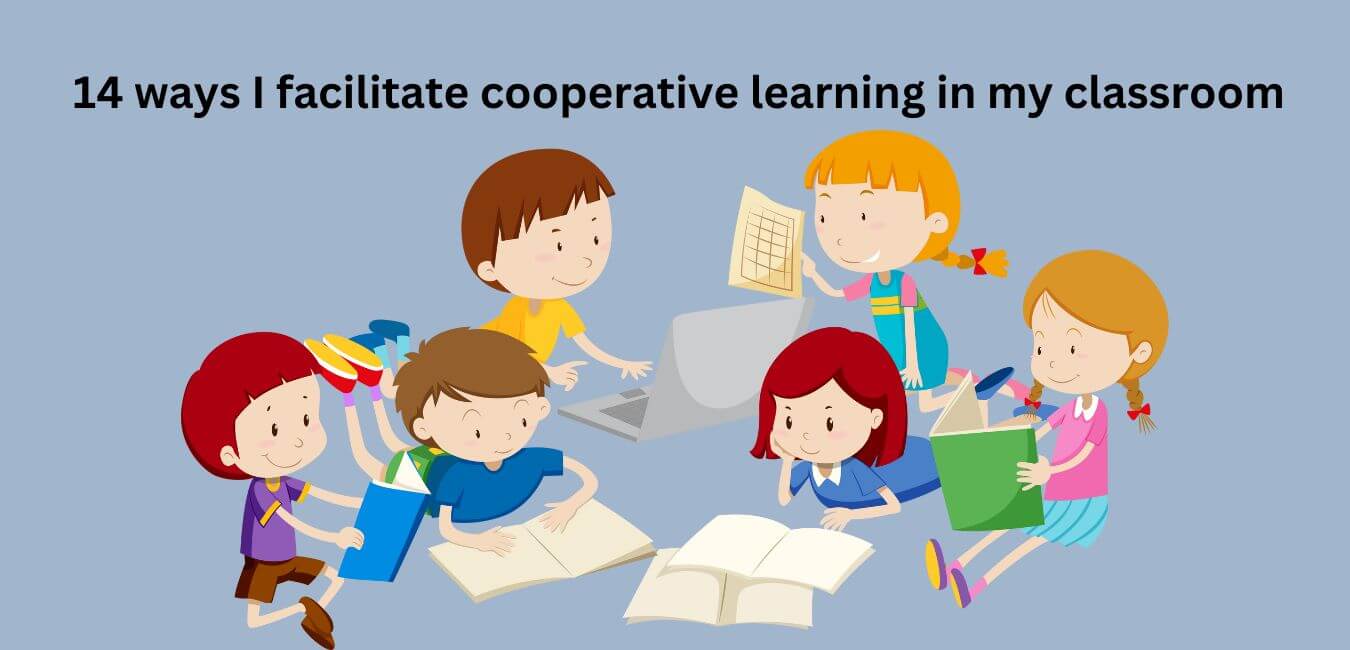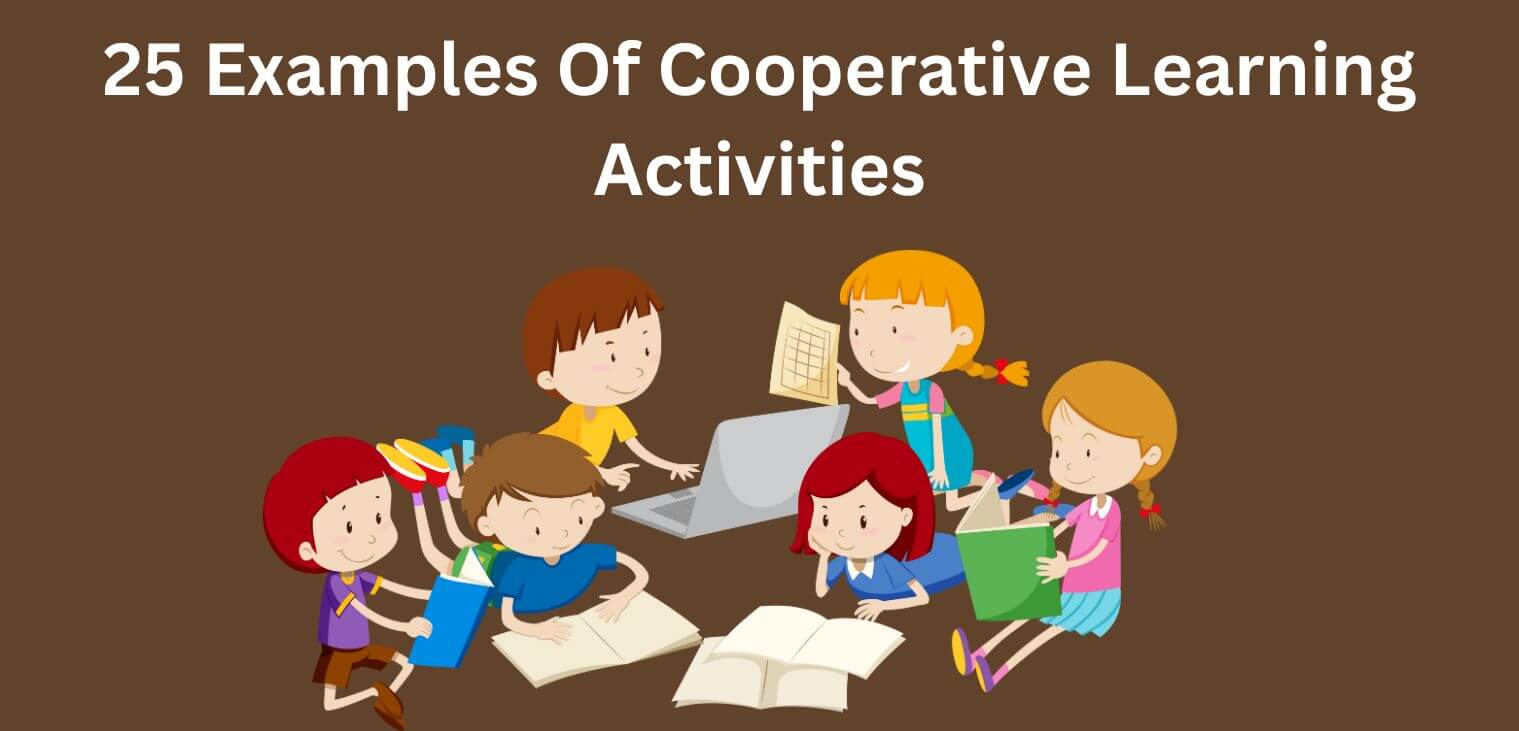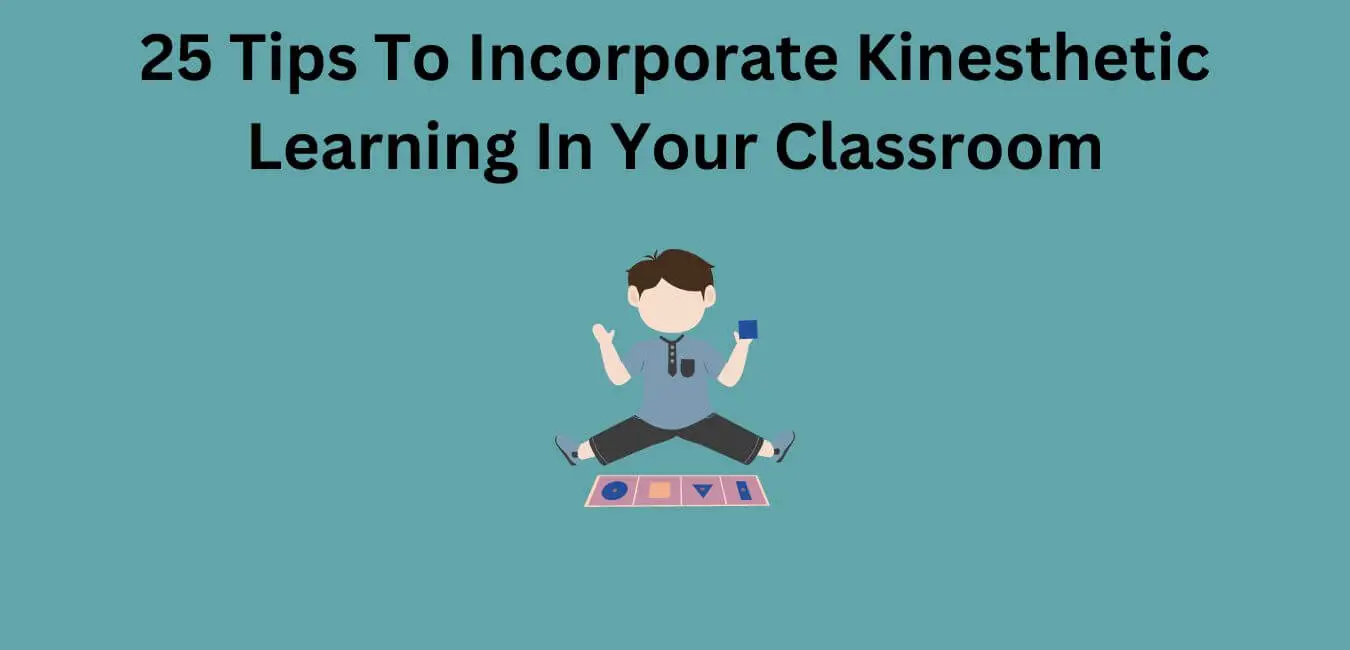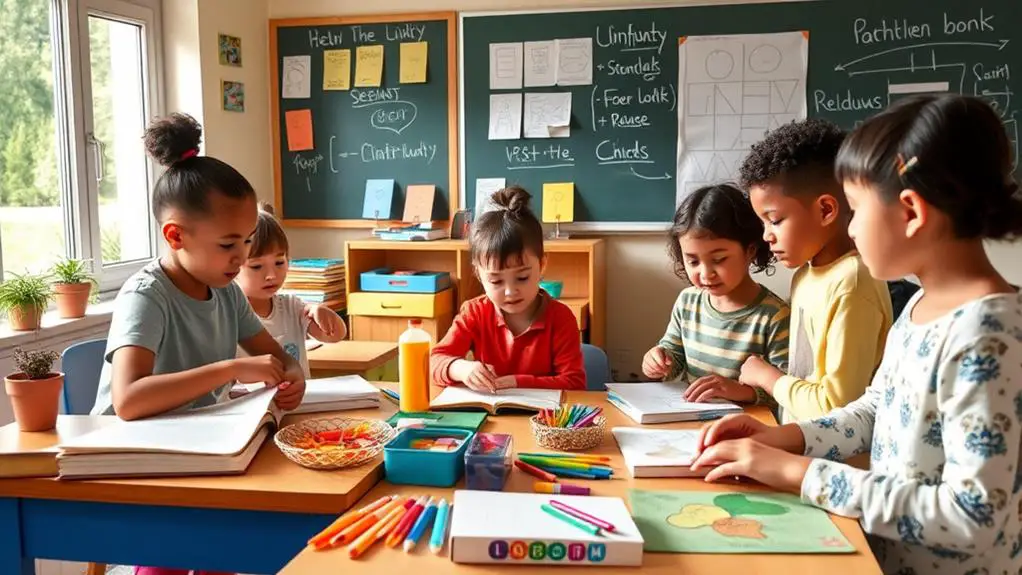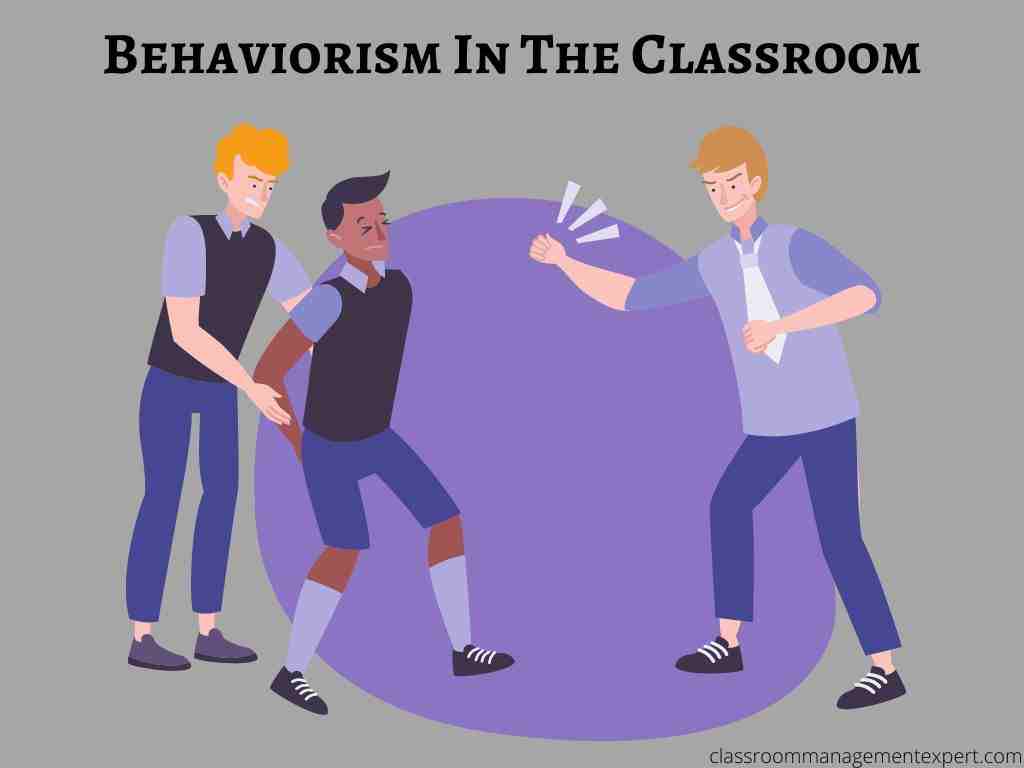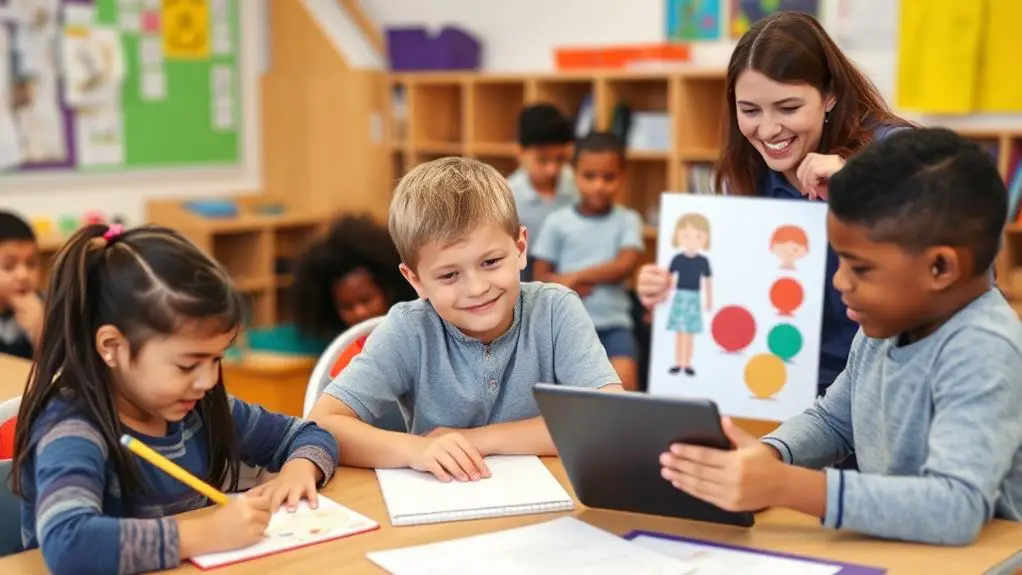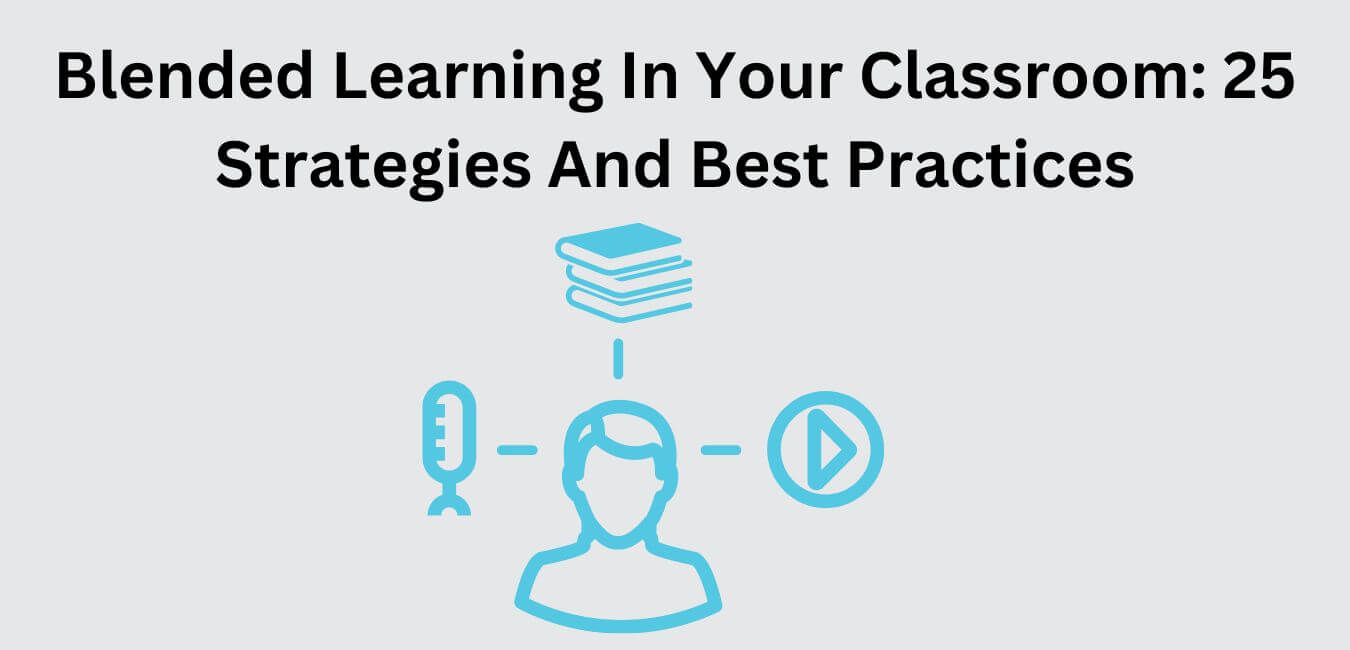The bell rings, and students rush into the classroom, chatting and laughing, ready for another day of learning, eager to expand their horizons. Unfortunately, this idyllic scene is not always a reality. As much as most educators dream of an effortlessly tranquil and organized learning environment, disruption and chaos sometimes seem to be an inevitable part of teaching.
But what if I told you that there’s a highly effective approach to classroom management that can transform your learning space into a positive and engaging haven for not only your students but also yourself? Introducing the instructional classroom management approach!
In this blog post, we’ll explore the 15 benefits of utilizing this key pedagogical tool in your classroom. So, buckle up, grab your favorite cup of coffee (or tea), and let’s dive into the world of instructional classroom management together! Things are about to get a whole lot better for you and your students.
Why Use the Instructional Classroom Management Approach
1. Improved Learning Outcomes
The instructional classroom management approach offers numerous advantages in the learning environment. One of its most significant benefits is the improvement of learning outcomes for students. By implementing this approach, teachers can create a well-structured environment that promotes academic success and the development of crucial life skills. This method encourages students to become actively involved in the learning process, leading to better comprehension and retention of knowledge.
Another advantage of this method is its ability to foster positive behavior among learners. Implementing instructional classroom management strategies enables educators to set clear expectations, rules, and boundaries. This structure helps students understand what is required of them and develop self-discipline and responsibility. As a result, learners display better conduct, become more respectful, and engage in productive activities that contribute to their education.
Furthermore, the instructional classroom management approach supports educators in managing their stress and anxiety levels. The systematic nature of this method allows teachers to make swift decisions and handle various classroom scenarios with ease. In turn, this helps create a healthy learning environment where both the educator and the learners can thrive.
In summary, the instructional classroom management approach is an effective tool that offers multifaceted benefits in the educational setting. By integrating this method into their teaching practices, educators enhance learning outcomes for students, foster positive behavior, and protect their own well-being. Overall, this approach provides a conducive environment for academic success and personal growth.
2. Develop critical thinking and problem-solving skills
Developing critical thinking and problem-solving skills is an essential aspect of modern education. In the classroom, teachers can employ instructional classroom management approaches to encourage students to think critically and solve problems effectively. This method involves various strategies such as open discussions, group work, and real-life problem-solving activities.
One of the main benefits of fostering critical thinking skills is that it helps students to analyze and evaluate information from different perspectives. This ability enables them to make informed decisions and avoid being easily misled by false information. Furthermore, critical thinkers are proactive learners who actively engage with their surroundings and listen to others’ viewpoints.
Promoting problem-solving skills in the classroom provides students with the tools they need to tackle challenges in a systematic and organized manner. As a result, students are more likely to become self-motivated and independent learners who can adapt to various situations. Additionally, honing problem-solving abilities helps students to develop resilience and nurture their creativity, allowing them to approach difficult obstacles with a positive attitude and innovative solutions.
Overall, emphasizing critical thinking and problem-solving skills through instructional classroom management techniques plays a crucial role in preparing students to achieve success in their academic and professional lives.
3. Enhanced Teamwork and Collaboration among students
Incorporating technology and instructional classroom management approaches in education greatly contributes to the enhancement of teamwork and collaboration among students. With an ever-increasing focus on preparing students for life after graduation, using technology effectively is not only vital for success in academic settings but also in professional environments. Tools such as Google Docs, wiki pages, and educational software help students work together to accomplish common goals, fostering a sense of unity and cooperation.
This collaborative learning approach not only makes the learning experience more exciting and engaging for students, but it also helps them develop essential teamwork skills that are crucial for the future. From improved communication to problem-solving and critical thinking, students who work in teams benefit from shared experiences and learn to value the contributions of each member.
Moreover, the ability to work in teams prepares students for college and the workplace, where collaboration and team-based projects are often the norm. Being well-versed in using technology for teamwork and collaboration not only ensures their readiness for these environments but also sets them up for a lifetime of success.
In conclusion, incorporating instructional classroom management approaches that focus on enhanced teamwork and collaboration among students reaps multiple benefits in their academic and personal lives. By embracing technology and teaching students how to work effectively as a team, educators can equip them with essential skills for future success and make learning a meaningful and enjoyable experience.
4. Positive Behavior Reinforcement
Positive behavior reinforcement is a powerful approach that teachers can use to encourage desired actions and behaviors in the classroom. By focusing on rewarding and reinforcing positive actions, students become more motivated to engage in these behaviors, resulting in a more constructive and enjoyable classroom environment.
One of the main benefits of using positive reinforcement in the classroom is the minimization of lost instructional time due to behavioral concerns. When students are consistently rewarded for their positive actions, they become more focused and engaged in their lessons, leading to greater overall learning outcomes.
Another advantage of positive reinforcement is that it leads to increased student engagement and improved confidence. As students receive positive feedback for their efforts, they gain a sense of accomplishment and self-worth, thereby becoming more motivated to participate in classroom activities.
Creating a positive classroom environment is essential for fostering a love of learning, and positive reinforcement plays a crucial role in promoting this atmosphere. As students experience success and recognition through the reinforcement of positive behavior, they are more likely to feel comfortable and supported in the classroom.
Lastly, the use of positive reinforcement can boost student motivation by helping them to feel recognized and valued for their achievements. This sense of recognition can lead to increased effort and enthusiasm toward learning, ultimately benefitting both the individual student and the overall classroom dynamic.
5. Boost Students’ Self-esteem
Incorporating an instructional classroom management approach has been shown to yield a significant boost in students’ self-esteem. This approach involves integrating social-emotional learning (SEL) into the curriculum, which in turn fosters a positive learning environment for students. As a result, learners feel safe, respected, and supported, enabling them to perform at their best.
Moreover, a classroom that focuses on SEL encourages students to be themselves, take risks, and work towards their goals, further enhancing their self-esteem. This leads to increased motivation, academic success, and personal growth as they feel more confident in their abilities.
Furthermore, an emphasis on SEL in the classroom allows students to develop essential life skills such as problem-solving, goal-setting, and time management. These skills not only contribute to a well-rounded education but also help students build a strong sense of self-worth. By providing a space to discuss mental health and supporting open communication, this instructional classroom management approach reinforces positive mental health habits.
In conclusion, utilizing an instructional classroom management approach that incorporates SEL offers numerous benefits, including a significant boost in students’ self-esteem. By promoting a healthy learning environment and focusing on essential life skills, educators can help students reach their full potential academically, socially, and emotionally.
6. Fosters a Respectful Classroom Culture
One of the most significant benefits of adopting an instructional classroom management approach is the creation of a respectful learning environment. This approach emphasizes the importance of positive relationships among students and between students and teachers. By focusing on promoting prosocial student behavior and academic engagement, a more orderly and conducive environment is fostered, reducing instances of disruptive behavior and creating a more effective learning experience for all students involved.
A key aspect of this approach is the use of personalized teaching strategies tailored to individual students’ needs. Teachers can engage students more effectively by taking into consideration their different learning styles, preferences, and abilities. By doing so, educators can ensure that students are more likely to remain engaged and motivated, contributing positively to the overall classroom atmosphere.
Moreover, involving students in the establishment of classroom rules is an invaluable aspect of instructional classroom management, promoting a sense of ownership and commitment among students. This collaborative approach fosters a culture of shared responsibility and mutual respect, making it easier for teachers to enforce rules without seeming unnecessarily strict or authoritarian. In turn, students are more likely to adhere to the established guidelines, as they have had a role in their formulation.
Lastly, adopting such an approach enables teachers to model and demonstrate appropriate behavior, further encouraging students to exhibit similar attitudes and actions. Through these methods, an instructional classroom management approach creates a harmonious and respectful classroom culture, benefiting both students and educators alike.
7. Teaches Students How to Manage their Emotions
Teaching students how to manage their emotions is essential for their overall development. Integrating social-emotional learning (SEL) into the curriculum provides numerous benefits, including better academic performance, improved behavior, and increased motivation. Implementing this instructional approach in the classroom creates a safe, respectful, and supportive learning environment where students feel valued and encouraged.
One of the primary benefits of teaching students how to manage their emotions is the development of self-awareness. This involves understanding one’s own emotions, personal goals, and values, as well as accurately assessing one’s strengths and limitations. Developing self-awareness enables students to recognize how their thoughts, feelings, and actions are interconnected, ultimately improving their emotional intelligence.
Furthermore, SEL enhances self-management skills, which are critical in regulating one’s emotions and behaviors. This, in turn, helps students develop their ability to delay gratification, manage stress, control impulses, and persevere through challenges to achieve their goals.
Lastly, incorporating SEL into the classroom gives students the opportunity to discuss mental health, fostering a healthy environment for open communication. Encouraging these discussions helps students develop the skills they need to navigate their emotions and situations more effectively in both their personal and academic lives.
8. Adaptable and Flexible to Each Student’s Needs
In today’s diverse classrooms, teachers are expected to cater to the unique learning needs of each student to ensure their success. One critical aspect in making this happen is by applying an adaptable and flexible instructional classroom management approach. Such an approach allows educators to tailor their teaching strategies, providing a customized learning experience for each student.
Adaptable classroom management strategies involve adjusting the teaching style, materials, and methods based on the specific needs of each student. This can be achieved through various techniques, such as providing visual aids, lowering the reading level, or incorporating group activities, depending on the student’s learning preferences and abilities.
flexible instructional strategies, on the other hand, enable teachers to modify their lesson plans and timelines to better suit the pace and comprehension level of the students. This can include extending deadlines, offering extra support, or revising assignments to ensure that the learning objectives are met effectively.
Together, these adaptable and flexible approaches can create a more engaging and inclusive learning environment that caters to the individual needs of each student. This not only helps students feel more comfortable and confident in their learning but also promotes an atmosphere of mutual respect and understanding between the educator and their pupils. In turn, a more harmonious and productive classroom community is fostered, leading to an overall improvement in student achievement and well-being.
9. Reduced Distractions and Interruptions
One of the key benefits of implementing an instructional classroom management approach is the significant reduction in distractions and interruptions. This allows students to better focus on the learning process and absorb the material being taught. A structured learning environment, tailored to the needs of individual students, minimizes unnecessary disruptions and encourages more efficient use of class time.
In order to achieve this, teachers can employ various strategies, such as keeping class sizes small to ensure more personalized attention for each student. This also enables teachers to identify and address any specific learning challenges students may face. Additionally, a well-planned physical arrangement of the classroom can promote a more focused and inviting atmosphere, making it conducive to learning and collaboration.
Another essential aspect of reducing distractions is the close monitoring of student progress. Teachers can actively engage with students, ask questions to confirm their understanding, and provide frequent positive reinforcement to motivate and encourage them. By establishing clear goals and expectations from the beginning, teachers can instill a sense of discipline and structure that facilitate a distraction-free learning environment, leading to improved academic outcomes for all students.
10. Incorporates a Stricter Dress Code
Incorporating a stricter dress code in the classroom has multiple benefits. For one, it helps to maintain a professional and respectful atmosphere for learning. When students adhere to a dress code, it can reduce classroom distractions, allowing them to focus more on their studies. Furthermore, abiding by a dress code can promote a sense of school pride and unity among students.
This is not to say that individual expression should be stifled – rather, a dress code can teach students the importance of dressing appropriately for different situations. This valuable life skill will be useful when entering the workforce, where certain dress codes and expectations may apply in professional settings.
Moreover, a well-enforced dress code can help to alleviate the pressure on students to conform to ever-changing fashion trends. In doing so, it creates a more equitable learning environment by minimizing the social divide between those who can afford expensive clothing and those who cannot.
A stricter dress code also encourages students to take school and learning more seriously. When students dress neatly and respectfully, it can have a positive impact on their attitude toward education. Additionally, it sends a signal to the wider community that the school values respect, dignity, and responsibility.
In conclusion, incorporating a stricter dress code in the classroom has a range of benefits for both students and the broader school community. It helps to maintain a work-focused atmosphere, promotes good values, and prepares students for future professional settings.
11. Shortened Transition Times
Shortened transition times in the classroom play a crucial role in ensuring effective management, successful learners, and engaged teachers. Smooth and well-structured transitions result in increased learning time, allowing students to make the most out of their class sessions. Moreover, reduced transition time helps teachers utilize their most valuable resource, time, more efficiently.
Emphasizing timely transitions enables teachers to cultivate a sense of urgency and mental focus among students during various activities. This approach can be achieved by integrating time limits and countdowns, motivating students to complete tasks rapidly and efficiently. Utilizing simple techniques such as incorporating music, choral responses, and team points can enhance the effectiveness of quick transitions.
Mastering classroom transitions contribute to a healthier class climate, preventing unmotivated and unfocused learners. Ultimately, efficient transitions pave the way for a more dynamic, productive, and engaging learning environment, benefiting both students and teachers alike.
12. Incorporates Weekly Classroom Meetings
Incorporating weekly classroom meetings into the educational routine is a constructive method for fostering a productive and positive learning atmosphere. These meetings, generally held for 15 to 20 minutes once a week, contribute significantly to building trust, rapport, and a sense of community among students and teachers.
Weekly interactions facilitate an open channel for communication within the classroom and provide a safe environment for students to discuss relevant issues, resolve any conflicts, and express their thoughts, opinions, and concerns.
Moreover, weekly meetings encourage students to take on various roles and responsibilities within the classroom, which, in turn, nurtures their social and emotional growth. It is through these gatherings that students learn about conflict resolution, empathy, active listening, collaboration, and other life skills that will aid them in their academic and personal development.
By establishing a routine that demonstrates genuine care and support for the well-being of all students, teachers can effectively promote student engagement and motivation, leading to a positive classroom culture.
13. Efficient and Effective Classroom Management
Efficient and effective classroom management is crucial for creating a conducive environment for learning. By incorporating instructional strategies, teachers can enhance student engagement, improve behavior, and foster a supportive community.
One of the primary benefits of implementing an instructional classroom management approach is that it promotes active participation from students. Engaging learners in activities and discussions encourages them to take ownership of their educational process, leading to increased motivation and improved performance. This approach also helps establish clear expectations and guidelines for behavior, thereby reducing the likelihood of disruptions due to misunderstandings.
Another advantage of instructional classroom management is that it emphasizes positive reinforcement, which is essential for boosting student self-esteem and reinforcing desirable behaviors. By acknowledging and rewarding good conduct, teachers can create a more pleasant classroom atmosphere where all students feel welcome and valued.
Besides, using instructional strategies allows educators to better differentiate instruction, catering to the diverse learning needs of their pupils. This often involves incorporating a mix of teaching styles and materials, encouraging group work, and allowing for individualized learning opportunities, promoting inclusion and equity.
Lastly, an effective instructional classroom management approach helps develop essential life skills such as problem-solving, critical thinking, and collaboration, preparing students for future success in all aspects of their lives.
14. Improved Parent-Teacher Communication
Improving parent-teacher communication is crucial for student success as it fosters supportive and understanding relationships between all stakeholders. Enhanced communication can be achieved by utilizing various technology tools such as email, text, and comprehensive classroom management software. This enables parents to stay updated on their child’s progress, helping to build trust and minimize their entitlement.
Email is an efficient and widely used medium, but teachers must also establish interpersonal connections and set boundaries for optimal communication. Text messaging is another tool for teachers to send quick, short-term updates, provided they conform to legal limitations and adhere to best practices. Classroom management software encompasses all the features of email and text, offering a streamlined platform for parents to view grades, portfolios, and announcements, and to communicate with teachers.
By employing these tools, educators can enhance parent-teacher communication, resulting in professional relationships and well-defined boundaries. Parents will appreciate this level of transparency and involvement, making for more effective and efficient communication overall.
15. Increased Job Satisfaction for Teachers and Students
Increased job satisfaction for teachers leads to better educational outcomes and overall well-being for both educators and students. When teachers feel supported and confident in their abilities, they are more likely to create a positive working environment where students can thrive.
Self-efficacy, positive student behavior, and favorable working conditions all contribute to this satisfaction, resulting in a more enjoyable and productive atmosphere for everyone involved. Teachers with higher job satisfaction are less likely to experience burnout, attrition, and emotional exhaustion, which ultimately benefits the school community as a whole.
Having healthy, motivated, and satisfied educators in the classroom is crucial for promoting student success and retention. By fostering strong teacher-student relationships and supporting professional development, schools can encourage teachers to remain in their positions, even as they approach retirement age.
In turn, this helps to maintain the stability and effectiveness of the education system, addressing potential teacher shortages and ensuring a high-quality learning experience for all students. Investing in the well-being of teachers ultimately cultivates a more passionate and dedicated educational workforce, creating a lasting positive impact on the lives of the students they serve.
Conclusion
Implementing an instructional classroom management approach can bring numerous benefits to both teachers and students. This approach promotes a positive and engaging learning environment, fosters student independence and responsibility, enhances academic achievement and retention, reduces disruptive behavior, and increases instructional time.
Additionally, it allows for personalized instruction tailored to individual student needs and preferences. By adopting this approach, educators can create a more inclusive and equitable classroom that supports the success of all learners.
Therefore, it is essential for teachers to explore and incorporate instructional classroom management strategies in their teaching practices to optimize student learning outcomes. Let us embrace this approach and unlock the full potential of our classrooms.

